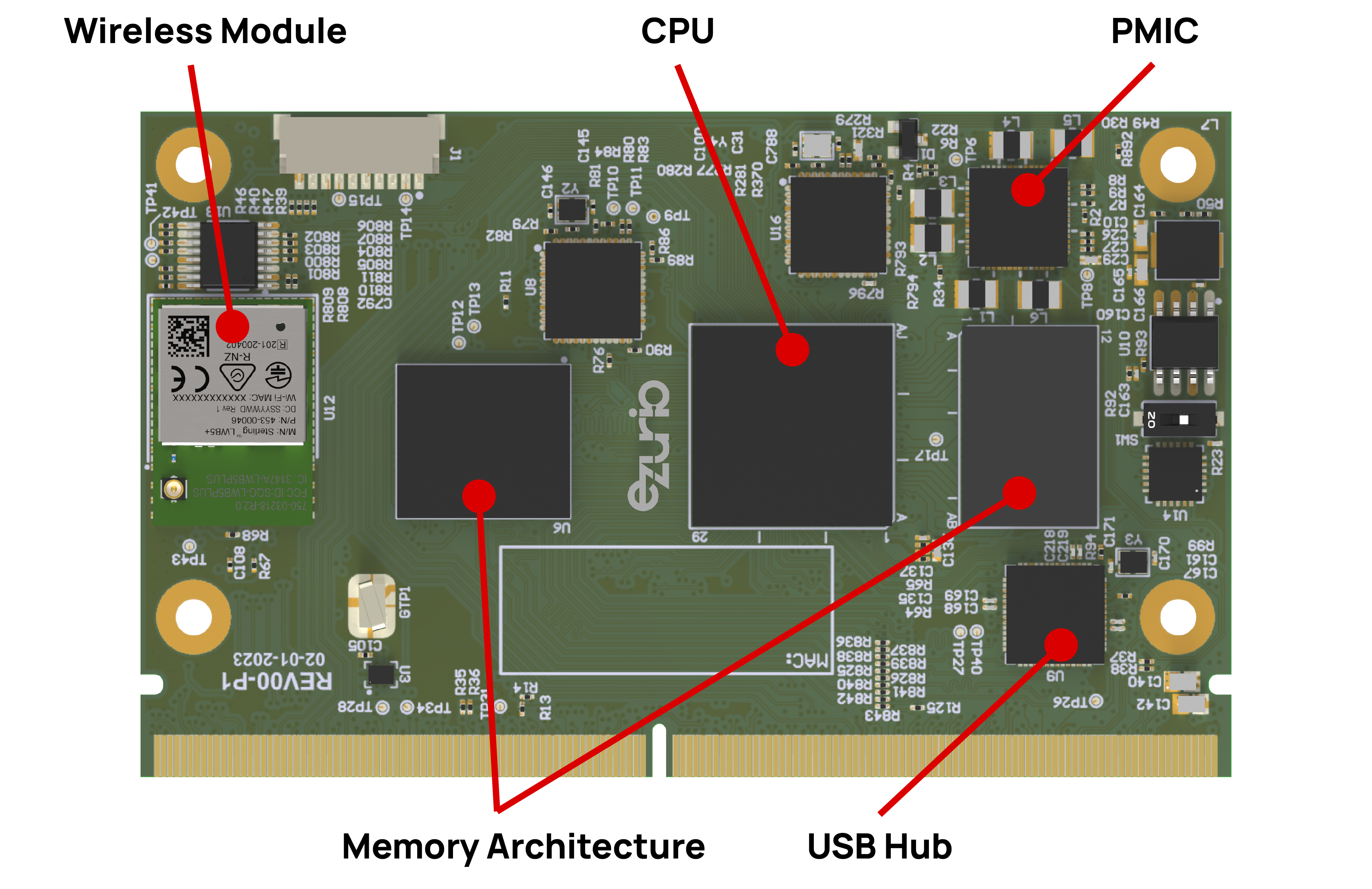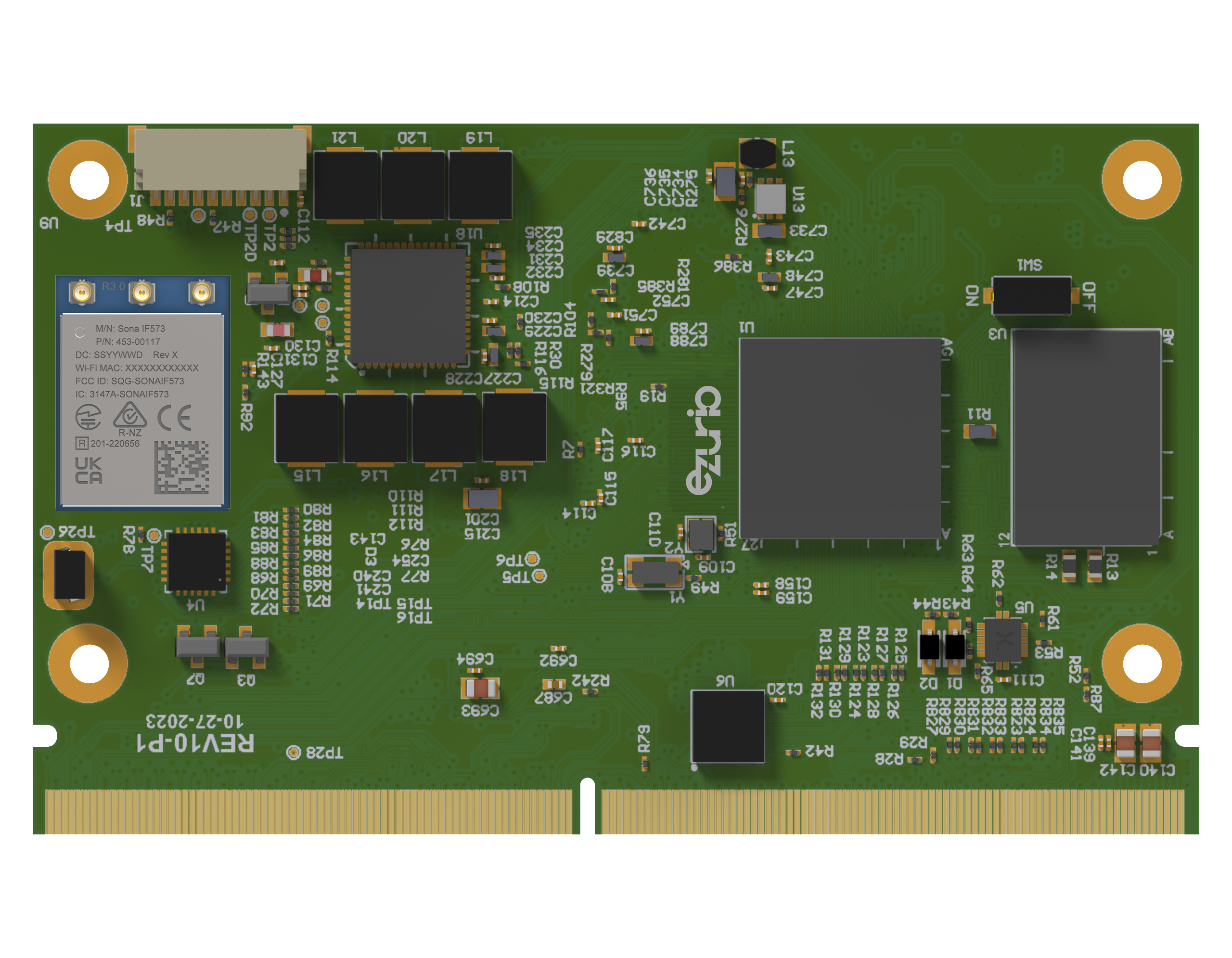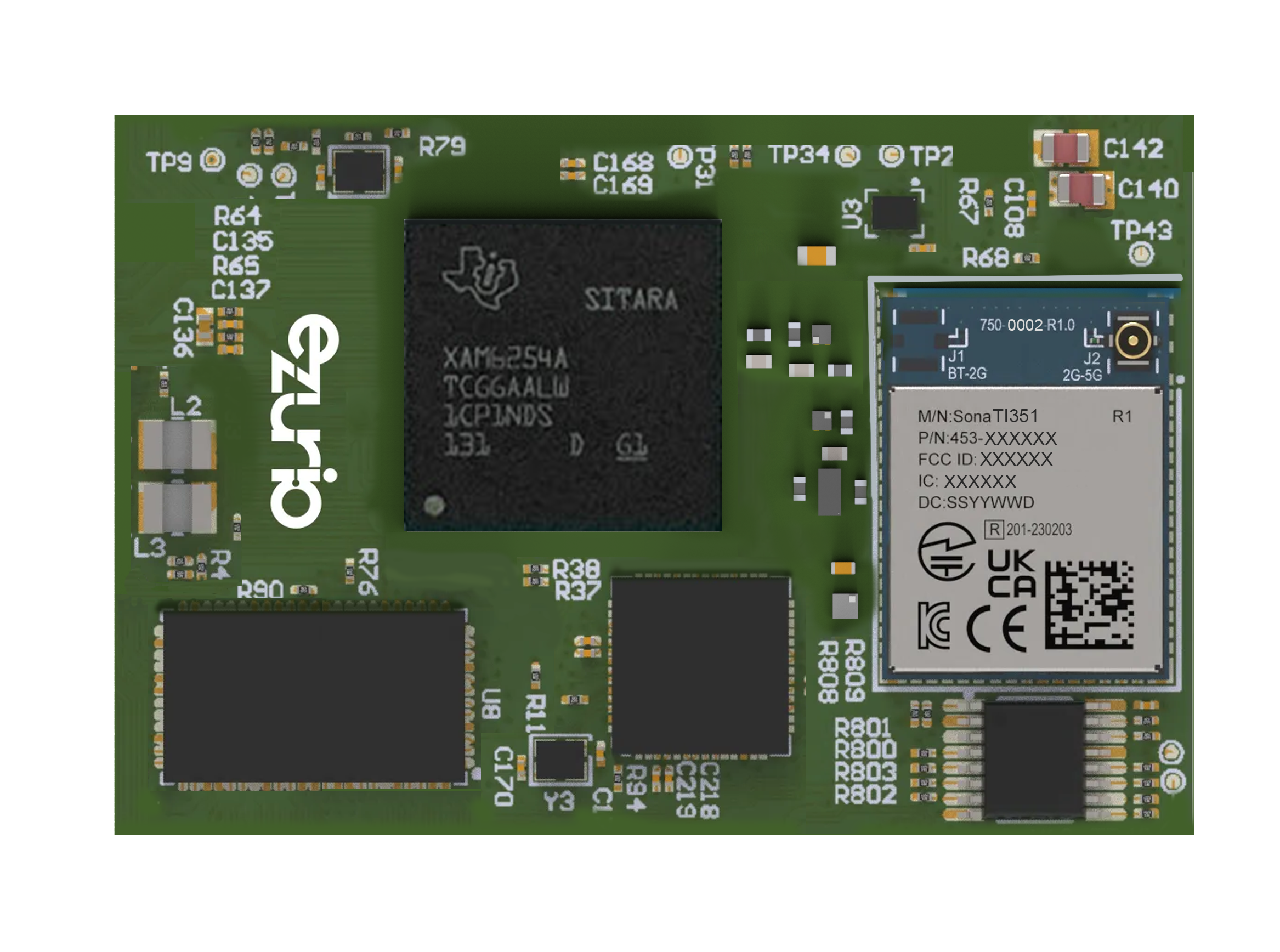The utilization of System-on-Modules (SOMs) in embedded applications presents a multitude of strategic advantages, particularly for design engineers and product development teams aiming to accelerate development cycles and enhance product performance. Here are the key benefits of incorporating SOMs into embedded system designs:
Reduced Time to Market
SOMs enable developers to bypass the time-consuming processes of designing, testing, and troubleshooting custom hardware through rapid prototyping. By providing a pre-tested, ready-to-use computing core, SOMs allow for immediate focus on application-specific aspects of product development.
Additionally, with critical components already integrated and validated, design teams can minimize the risk of hardware compatibility issues, reducing the iteration cycles needed to reach a stable product design.
Cost Efficiency
The need for extensive custom circuit design, layout, and prototype manufacturing is significantly reduced with SOMs. This translates into lower overall development costs and reduced need for specialized hardware design expertise.
SOMs also facilitate economies of scale, as manufacturers produce modules in large volumes reducing the cost per unit. End-users of SOMs can leverage these cost savings without the need for high-volume production commitments.
Design Flexibility and Scalability
Implementing system-on-modules into your IoT design projects offers high design flexibility, as the same module can be used across multiple products or product variants, allowing for easy scalability and adaptability to different market needs or technology updates.
In addition, using a SOM with a standardized form factor, like SGET’s Smart Mobility Architecture (SMARC), provides a reliable foundation for your product design. Our integration of the SMARC architecture assures that a range of Ezurio module options will support your design for 10, 15, or even 20 years. Upgrading your system to incorporate new technologies or improve performance (e.g., a more powerful processor, additional memory) is straightforward – simply replace the existing SOM for a more advanced one via the standard edge connector, without the need to redesign the entire system.
Focus on Core Competency
With the hardware complexities managed by the SOM, development teams can concentrate on software development and application-specific functionalities, channeling their skills where they make the biggest impact. Ezurio enhances this process with our Support+ package, designed to minimize your design risks and accelerate your product’s time to market. This package includes comprehensive solutions and services such as enhanced support with direct access to engineering and live Field Application Engineers (FAEs), schematic and PCB layout reviews, and testing services. These offerings ensure your module remains current, fully functional, and compliant with all necessary certifications.
Another benefit is that managing updates, compatibility, and support becomes simpler, as the core system hardware remains standardized across product lines or generations.
Reliability and Quality Assurance
System-on-modules are designed, manufactured, and tested to meet stringent industry standards. This ensures high reliability and performance right from the start, reducing the risk of hardware failures in the field.
SOM manufacturers like Ezurio provide long-term support for our products, including documentation, development tools, and software updates. This commitment supports the lifecycle of the end product, even as individual components may become obsolete.
Common Applications of System-on-Modules
SOM technology finds applications across a diverse range of industries, from commercial and healthcare to IoT and industrial automation. In the industrial sector, for example, SOMs are instrumental for improving precision in robotic controls systems and increasing efficiency in assembly line automation.
The healthcare industry utilizes SOMs in patient monitoring devices and diagnostic equipment, leveraging their compact size and computational power. Similarly, in commercial IoT applications, SOMs enable smart building processes and the seamless integration of various IoT devices.
To learn more about specific applications and use cases of System-on-Modules, visit our case studies.
How To Choose The Right System-on-Module For Your Project
Selecting the appropriate SOM for your project involves considering several key factors, including processing power, connectivity options, and compatibility with existing systems. It's also essential to evaluate the support and ecosystem provided by the SOM manufacturer.
Leading SOM manufacturers distinguish themselves through their commitment to quality and support, and by providing comprehensive development resources. When evaluating potential SOMs, consider not only the product’s technical specifications but also the documentation, customer support, and availability of development kits and tools. These elements are crucial to ensure that your development process is as efficient and problem-free as possible.
Assess the longevity of product support. Choosing a SOM from a manufacturer that offers long-term support guarantees that you will receive updates and assistance throughout the lifecycle of your product, which is especially important for applications requiring extended operational periods.
Lastly, explore the ecosystem surrounding the SOM. A robust range of product offerings and compatible peripherals can greatly help the development process, offering ready-made solutions and expertise that can help overcome technical challenges.
By considering these aspects, you can ensure that the SOM you choose not only fits the technical requirements of your project, but also has the support and resources necessary for successful implementation and future scalability.
Related Reading: A Guide for Choosing The Right SOM or SBC For IoT Design
Future Trends in System-on-Module Development
Emerging trends in SOM technology are shaping the future of embedded systems. Advances in processing capabilities, miniaturization, and the integration of AI functionalities are at the forefront of these developments.
These trends indicate a move towards even more powerful, versatile, and intelligent SOMs, capable of driving innovation in various industries. As these technologies evolve, we can expect SOMs to become even more integral to the development of cutting-edge products and solutions.
Ezurio works with numerous leading silicon partners to provide next-generation embedded systems:


 Laird Connectivity is now Ezurio
Laird Connectivity is now Ezurio



